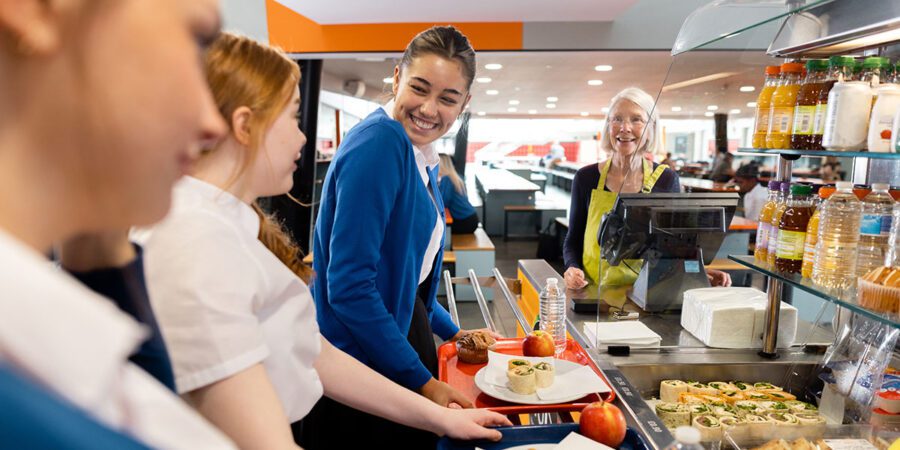
University
How IoT is Influencing Smart Campuses
Written by: Parcel Pending
6 Min Read
Published: December 3, 2021
Updated: December 7, 2023
The Internet of Things (IoT) has morphed from a cutting–edge idea into a reality with the rise of low-cost sensor networks and equipment, cloud computing platforms, artificial intelligence, and real-time connectivity. IoT has also created a significant impact on smart campus technology. These pieces of smart technology are influencing those in higher education to develop smart campuses that enhance campus operations, improve campus employee efficiency, and enable better experiences, operational efficiency, and security.
IoT Defined
IoT technologies are one of the fastest-growing emerging technologies in higher education. IoT describes the network of physical objects – “things” – that are embedded with sensors, software, and other smart technologies for the purpose of connecting and exchanging IoT data with other smart devices and systems over the internet. These smart devices range from ordinary household objects such as your refrigerator to sophisticated industrial tools such as manufacturing lines. The number of IoT–connected smart technology devices is expected to skyrocket to over 75 billion by 2025.1The “why” behind IoT device technology is that connecting the physical with the digital enables better communication, data analysis, and analytics-based decision-making.
How IoT Influences the Student Experience On-Campus
When a university creates environments where IoT technology and humans can interact, they can create a more immersive campus life experience for students, staff, and instructors – one that makes student engagement and interactions on-site or on a digital campus much more fulfilling.2
As Deloitte suggests, a strategic intelligent campus framework fosters a connected ecosystem to achieve desired outcomes.3 It, therefore, foresees a better financial aid experience, for example, which reduces wait times, avoids data errors, deploys chatbots, and automates the entire process – much to student delight.
As EDUCAUSE advocates: “No longer can institutions dictate the terms and conditions of students’ educational experiences and outcomes. Institutions will be optimizing their offerings to meet students’ needs.”5 To put it simply, the student experience matters.
Examples of marrying IoT technology with the campus experience abound. Southern New Hampshire University earns high marks for teaching architecture through the lens of a 3D holographic model. And Rensselaer Polytechnic Institute has created a revolutionary and immersive way to teach Mandarin. Students learn this Chinese dialect within a virtual computer-generated street scene and by conversing with avatars. As one successful student explains: “I thought it would be cheesy. It’s definitely more engaging because you’re actively involved with what’s going on.”6
Other higher education institutions are taking a page from shopping malls and installing kiosks brimming with information from maps to events to promotions. It’s not only better for the environment (no more flyers attached to corkboards), but better for student engagement and more pertinent as well. In fact, a recent survey from TrouDigital found that 95% of students and recent graduates believe “digital displays are beneficial for student communication”.7
How IoT Influences Campus Operations
IoT devices can influence school campuses in many simple but informative ways. Connecting smart campus IoT systems into one platform, for instance, paints a richer picture of available information; it can also help an intelligent campus automate systems. If, for example, a student walked into an empty building, they would first unlock the smart classroom, turn on the lights, and perhaps adjust the temperature using just one device. With the smart building’s energy, utilities, and locks connected to one IoT network, once a key fob opens the classroom door, the lights, heat, and even security cameras can automatically adjust. This allows the university to not only provide a smart classroom experience but also create a smart building.
IoT applications in university environments can be found around the country and in different aspects of operations. Arizona State University, for example, has recently undertaken a $300 million football stadium renovation that includes smart sensors that leverage IoT data to alert management about energy consumption.8 The system even includes information about concession sales! As another example, The University of Texas at Austin is running the largest microgrid in America. The microgrid manages and provides all the electricity, heat, and cooling on site, creating a perfect example of an energy-efficient smart campus initiative.
An often overlooked but key friction point is college parking lots. With interconnected cameras, smart sensors, and radar services, facilities management can create smart parking lots that monitor and direct traffic via kiosks or apps to available lots or spaces.
How IoT Influences Campus Security
However, IoT solutions can extend beyond energy-efficient campus infrastructure and smart parking. The past two years brought distinct challenges to college security teams: enforcing mask mandates and social distancing, keeping students and faculty safe, screening entry to the smart classroom and buildings, and monitoring public safety during various on-campus gatherings. Smart campus IoT technology emerged as a partial solution by replacing physical keys with touchless electronic access control options, leveraging emergency notification systems to keep communities abreast of rapidly changing health and safety guidelines, and upgrading and integrating video surveillance systems with thermal sensors to detect human activity in smart classroom or smart building environments.
Leveraging Smart Lockers for a Campus Hub™ Delivery Network
Other than implementing smart campus IoT solutions, many higher education institutions also embraced smart lockers. Most smart lockers at higher educational institutions were originally installed to serve as parcel locker solutions and assist in secure package delivery and retrieval. Today, these college campus amenities are being deployed in ways beyond the mail.
From streamlining bookstore operations to simplifying on-campus deliveries, smart lockers offer a wide range of benefits. In essence, a smart locker system is simply another contactless delivery and pick-up point that can be leveraged for the distribution of documents, laptops, keys, library books, move-in materials, and more.
With unpredictable schedules for students, faculty, and staff, a smart locker solution can act as a safe and secure delivery hub. Parcel Pending by Quadient’s Campus Hub™, for instance, features built-in intelligent hardware that provides full chain-of-custody for all goods and assets distributed and received across campus.
The way this smart campus technology solution works is simple: parcels are sorted, coded, and delivered to a secure electronic locker. Recipients are then notified by email or text that a package has been delivered to a locker. Students, staff, and faculty can then simply scan a barcode and open their locker in as little as 10 seconds.
The ultimate goal of the digital transformation of college campuses is to create a digital technology-enabled higher education institution that improves the student experience (both on-campus and on the digital campus) while boosting safety and operational efficiency. Using a smart locker solution for campus deliveries meets all of the objectives of a smart campus. To find out more, contact a Parcel Pending by Quadient representative today.
Sources:
- Statista. Internet of Things (IoT) connected devices installed base worldwide from 2015 to 2025 (in billions). (2016, November 27). https://www.statista.com/statistics/471264/iot-number-of-connected-devices-worldwide/
- Deloitte. (2019). Smart campus: the next-generation connected campus [Report]. Retrieved from: https://www2.deloitte.com/us/en/pages/consulting/solutions/next-generation-smart-campus.html
- Min-Allah, Nasro, and Saleh Alrashed. Smart Campus – A sketch. [(accessed on 8 May 2020)]; Available online: https://www.ncbi.nlm.nih.gov/pmc/articles/PMC7207122/
- Grajek, Susan & the 2021-2022 EDUCAUSE IT Issues Panel. EDUCAUSE. Top 10 IT Issues, 2022: The Higher Education We Deserve. (2021, November 1). https://er.educause.edu/articles/2021/11/top-10-it-issues-2022-the-higher-education-we-deserve
- Marcus, Jon. The New York Times. How Technology is Changing the Future of Higher Education. (2020, February 20). https://www.nytimes.com/2020/02/20/education/learning/education-technology.html
- TrouDigital. An Investigation Into Digital Signage at University [Infographic]. (2018). https://troudigital.com/digital-signage-at-university-study/
- Manning, Katherine. Process Maker. 8 Smart Campus Technology Examples. (2020, July 16). https://www.processmaker.com/blog/8-examples-of-smart-campus-technology/



